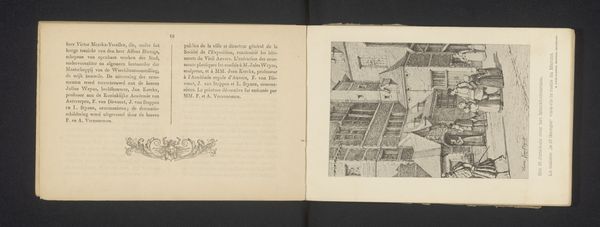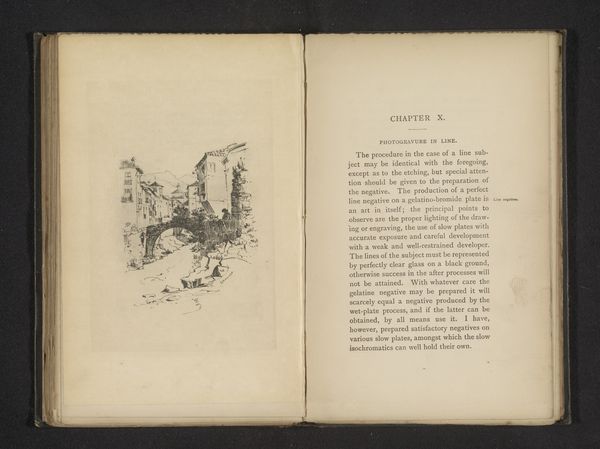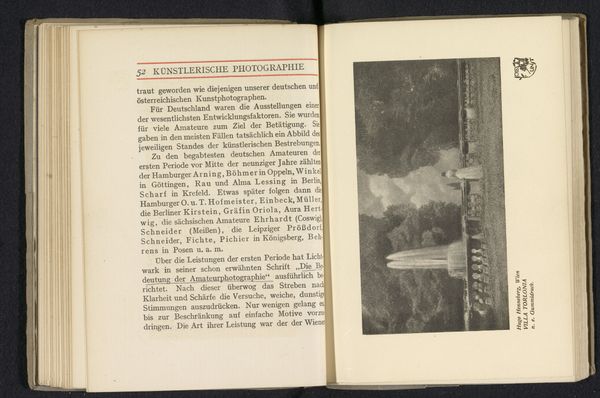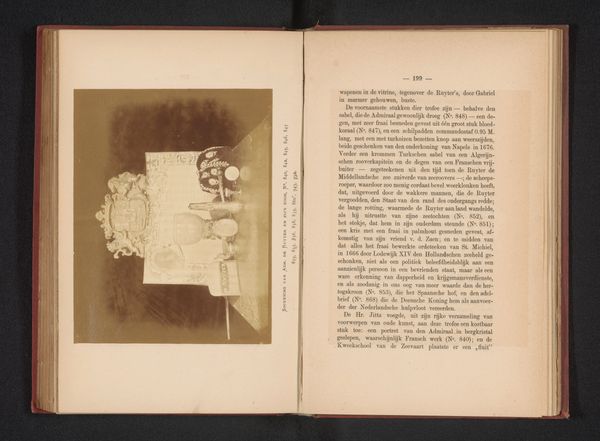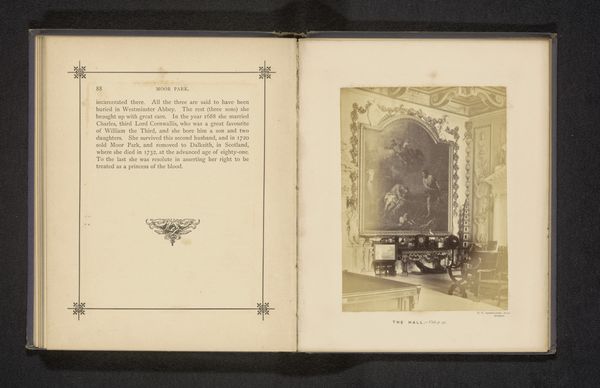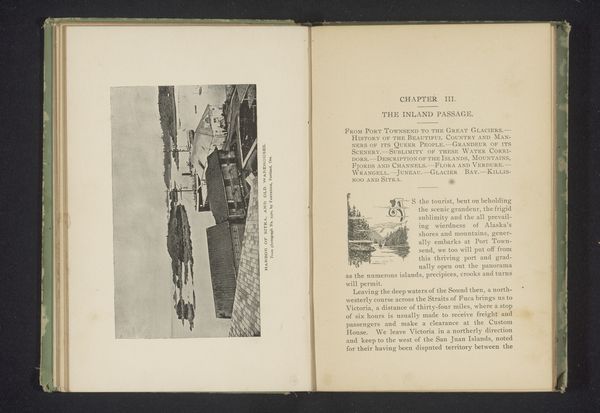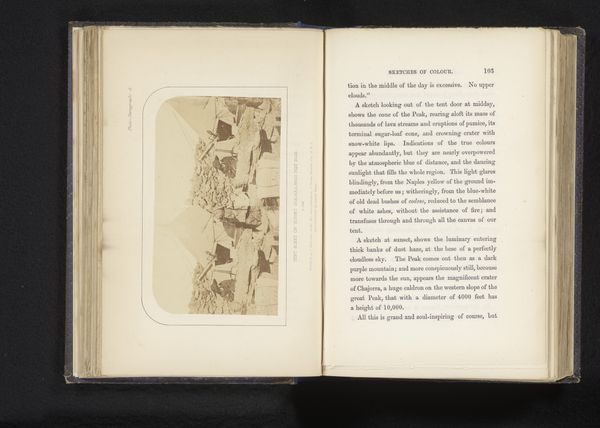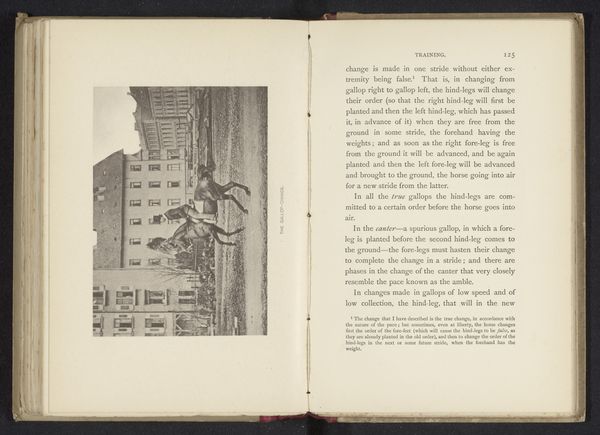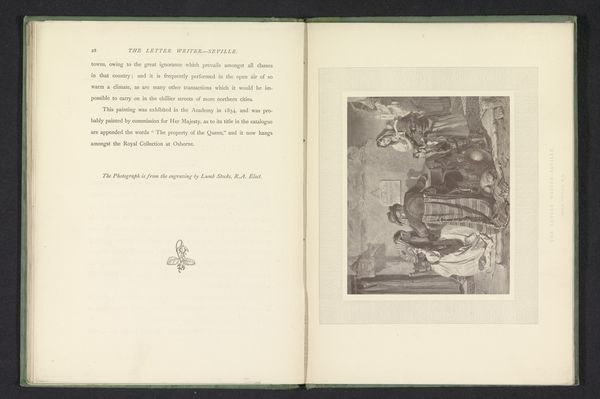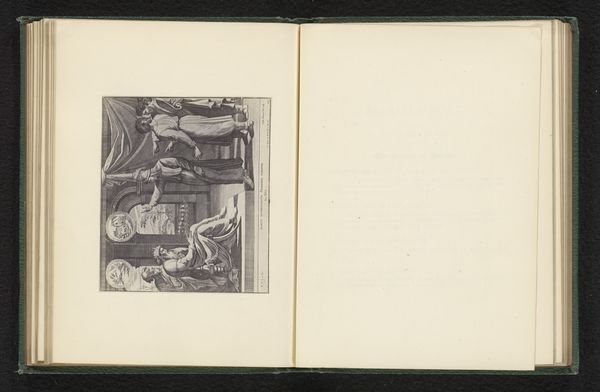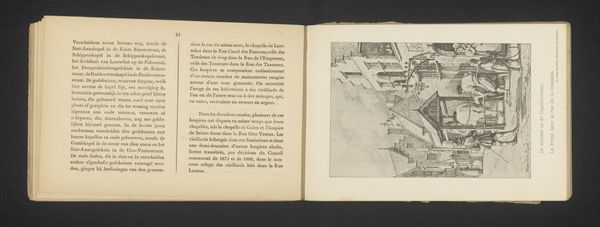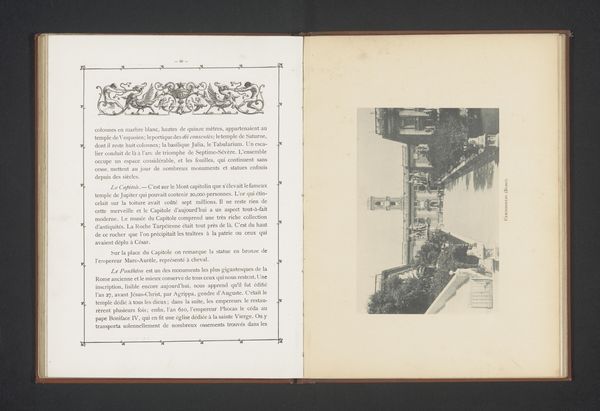
Reproductie van een tekening van een stoet in Antwerpen door Frans van Kuyck before 1894
0:00
0:00
drawing, print, paper, engraving
#
portrait
#
drawing
#
aged paper
#
homemade paper
# print
#
old engraving style
#
sketch book
#
hand drawn type
#
paper
#
personal sketchbook
#
hand-drawn typeface
#
thick font
#
genre-painting
#
history-painting
#
handwritten font
#
engraving
#
historical font
Dimensions: height 176 mm, width 118 mm
Copyright: Rijks Museum: Open Domain
Curator: What strikes me first about this piece is its incredible energy despite the faded sepia tones—almost feels like a vibrant memory trying to break free from the constraints of time. Editor: Absolutely! We're looking at a reproduction of a drawing by Frans van Kuyck, titled "Reproductie van een tekening van een stoet in Antwerpen door Frans van Kuyck," which translates to "Reproduction of a drawing of a procession in Antwerp by Frans van Kuyck." Based on the date, it would have been made sometime before 1894. It’s a print of an engraving on paper, and given the visual evidence, it seems like it might even come from a sketchbook. Curator: A procession, huh? It has that chaotic-but-organized feel of a street festival, a tangle of faces and movement all channeled down this narrow path...you can almost hear the din. Is this something significant historically for Antwerp? Editor: Well, public processions in Antwerp were deeply ingrained in the city’s identity. These events were displays of civic pride, religious fervor, and political power all rolled into one. Van Kuyck, in capturing this scene, offers us a glimpse into the performative aspects of urban life at the time. Think of how power manifested visibly. Curator: So it is an instance in time more than anything else, then, right? I find it charming. There’s something so innocent about the sketch-like quality—like a journalist quickly jotting down notes. The imperfections feel really intimate. The spontaneous moments, almost. Editor: That raw quality, that ‘imperfection,’ as you call it, is actually key. These images circulated widely. They weren't about photographic accuracy; they were about communicating ideas and reinforcing shared values within a community, contributing to a collective memory. Curator: Fascinating how it balances personal observation with civic function. Almost a paradox of a fleeting scene meant to immortalize something larger. It captures a living scene through lines of intent and purpose. Editor: Precisely. And viewing this now, within a museum context, makes you think about its journey. From a potential sketch, to an engraving, a widely reproduced image, and finally, a historical artifact. The role museums play, really, in how we experience history. Curator: This makes you imagine its lifespan, truly. All that energy bottled and then reopened. Really incredible, that layered quality—historical artifact, artist's intention, civic statement. And now here it sits—to a new kind of viewing that still echoes. Editor: Agreed. Each viewing provides a new reading in relation to modern cultural dynamics. These artworks transform when placed in this gallery!
Comments
No comments
Be the first to comment and join the conversation on the ultimate creative platform.
